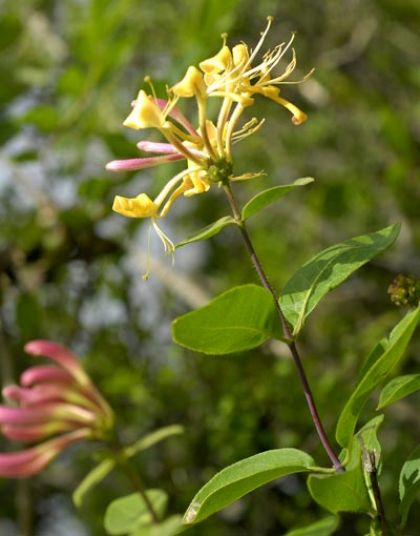Also known as Woodbine, this deciduous woody climber twines itself over other shrubs and hedgerows, giving out a most heavenly fragrance. From June to October it has distinctive creamy flowers which become pale yellow after pollination, often reddish outside. They are 3-5cm long, tubular, two-lipped and arranged in a whorl on stems which become silver-grey as the summer progresses. The leaves are grey-green and lanceolate. In autumn the scarlet berries appear in the hedgerows in clusters. Honeysuckle is pollinated by bees by day and at night the moths are attracted by the wonderful scent, the Elephant Hawkmoth regularly visiting in search of nectar. This is a native plant belonging to the family Caprifoliaceae.
I first identified the Honeysuckle in Glenmalure, Co Wicklow in 1952 and photographed it near Wellingtonbridge, Co Wexford in 1999.
If you are satisfied you have correctly identified this plant, please submit your sighting to the National Biodiversity Data Centre


